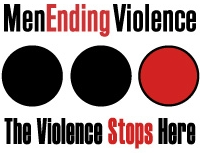What is Sexual Harassment
Source: http://www.un.org/womenwatch/osagi/pdf/whatissh.pdf
What?
Unwelcome sexual advances, requests for sexual favours, and other verbal or physical conduct of a sexual nature when:
- Submission to such conduct is made either explicitly or implicitly a term or condition of a woman’s employment, or
- Submission to or rejection of such conduct by an individual is used as a basis for employment decisions affecting such woman or
- Such conduct has the purpose or effect of unreasonably interfering with an woman’s work performance or creating an intimidating, hostile, or offensive working environment.
Unwelcome behaviour is the critical word. Unwelcome does not mean "involuntary." A woman may consent or agree to certain conduct and actively participate in it even though it is offensive and objectionable. Therefore, sexual conduct is unwelcome whenever the person subjected to it considers it unwelcome. Whether the person in fact welcomed a request for a date, sex-oriented comment, or joke depends on all the circumstances.
Sexual harassment includes many things…
· Actual or attempted rape or sexual assault.
· Unwanted pressure for sexual favours.
· Unwanted deliberate touching, leaning over, cornering, or pinching.
· Unwanted sexual looks or gestures.
· Unwanted letters, telephone calls, or materials of a sexual nature.
· Unwanted pressure for dates.
· Unwanted sexual teasing, jokes, remarks, or questions.
· Referring to an adult as a girl, hunk, doll, babe, or honey.
· Whistling at someone.
· Cat calls.
· Sexual comments.
· Turning work discussions to sexual topics.
· Sexual innuendos or stories.
· Asking about sexual fantasies, preferences, or history.
· Personal questions about social or sexual life.
· Sexual comments about a person’s clothing, anatomy, or looks.
· Kissing sounds, howling, and smacking lips.
· Telling lies or spreading rumours about a person’s personal sex life.
· Neck massage.
· Touching an employee’s clothing, hair, or body.
· Giving personal gifts.
· Hanging around a person.
· Hugging, kissing, patting, or stroking.
· Touching or rubbing oneself sexually around another person.
· Standing close or brushing up against a person.
· Looking a person up and down (elevator eyes).
· Staring at someone.
· Sexually suggestive signals.
· Facial expressions, winking, throwing kisses, or licking lips.
· Making sexual gestures with hands or through body movements.
Examples of Sexual Harassment
VERBAL
· Referring to an adult as a girl, doll, babe, or honey
· Whistling at someone, cat calls
· Making sexual comments about a woman’s body
· Making sexual comments or innuendos
· Turning work discussions to sexual topics
· Telling sexual jokes or stories
· Asking about sexual fantasies, preferences, or history
· Asking personal questions about social or sexual life
· Making kissing sounds, howling, and smacking lips
· Making sexual comments about a woman’s clothing, anatomy, or looks
· Repeatedly asking out a woman who is not interested
· Telling lies or spreading rumours about a woman’s personal sex life
NON-VERBAL
· Looking a woman up and down (Elevator eyes)
· Staring at woman
· Blocking a woman’s path
· Following the woman
· Giving personal gifts
· Displaying sexually suggestive visuals
· Making sexual gestures with hands or through body movements
· Making facial expressions such as winking, throwing kisses, or licking lips
PHYSICAL
· Giving a massage around the neck or shoulders
· Touching the woman’s clothing, hair, or body
· Hugging, kissing, patting, or stroking
· Touching or rubbing oneself sexually around a woman
· Standing close or brushing up against a woman
Impact of Sexual Harassment
The impact of sexual harassment varies from person to person and is dependent on the duration and severity of the harassing behaviour. The impact of sexual harassment on the person being harassed is often much greater than one may think. It can impact a person physically, emotionally, economically and socially and affect one’s career and academic performance or potential.
Some of the potential effects are:
- Anxiety, frustration, depression, sleeplessness and/or nightmares, difficulty concentrating, headaches, fatigue, shame and or guilt, feeling powerless, helpless or out of control, feeling angry towards the harasser, loss of confidence and self-esteem, withdrawal and isolation, suicidal thoughts or attempts
- Retaliation from the harasser, or colleagues/friends of the harasser, should the woman complain or file a grievance (retaliation can involve revenge along with more sexual harassment, and can involve stalking the complainant)
- Having to drop courses, or change academic plans; it may impact grade performance
- Increased absenteeism to avoid harassment, or because of illness from the stress
- Having one’s personal life held up for public scrutiny – the victim becomes the “accused,” and their dress, lifestyle, and private life will often come under attack. (Note: this rarely occurs for the perpetrator.)
- Being objectified and humiliated by scrutiny and gossip
- Becoming publicly sexualized
- Defamation of character and reputation
- Stress impacting relationships with significant others, sometimes resulting in the demise of the relationship; equally, stress on peer relationships and relationships with colleagues
- Impact on references/recommendations
- Loss of career – threatened or actual
- Feeling unsafe to leave one’s home and/or enter work/school where the harassment took place
- Physically and emotionally withdraw from friends, family, and coworkers
- Difficulty interacting with others
- Alcohol or drug use/misuse
- Change in appetite
- Stomach aliments
- Threatened or actual loss of income/benefits/promotions/opportunities
1-855-687-1868
Intake and Crisis Line
Emotional support, information, referral, legal advocacy




